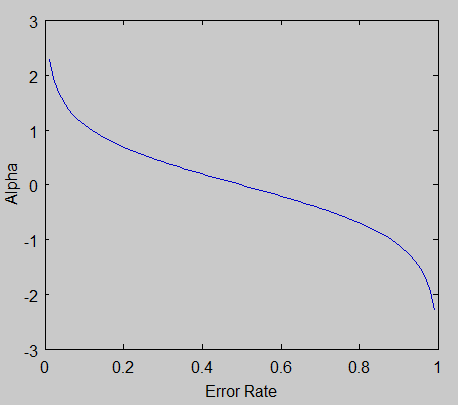AdaBoost (Adaptive Boosting) is a popular boosting algorithm that combines multiple weak classifiers to create a strong classifier.
AdaBoost
Assume we have some data \(\{(x_{i}, y_{i} )\}_{i=1}^{n}\) with $y_{i}$ being a binary column $\in {-1, 1}$.
Initialize the weights of the training instances:
$w_i^{(1)} = \frac{1}{n}$ for $i = 1, \dots, n$
For each iteration from 1 to $t$:
a. Train a decision tree classifier $h_t(x_i)$ on the training data with weights $w_i^{(t)}$.
💡 The Gini index is being used to decide which feature will produce the best split to create the stump tree. The Gini index formula is $G = \sum_{i=1}^J p_i (1 - p_i)$ where $J$ is the number of classes, and $p_i$ is the proportion of instances with class $i$ in the current node. Note: Each weak classifier should be trained on a random subset of the total training set. AdaBoost assigns a “weight” (i.e. weighted sampling method ) to each training example, which determines the probability that each example should appear in the training set.
💡 AdaBoost makes super small decision trees (i.e. stumps ).
b. Calculate the error of the weak classifier:
$\epsilon_t = \sum_{i=1}^n w_i^{(t)} I(y_i \neq h_t(x_i))$
💡 The error term above basically sums up the weights of the misclassified examples which is being used in the formula c. to calculate the weight of the classifier $h_{t}(x_{i})$.
c. Calculate the weight of the weak classifier $h_t(x)$:
$\alpha_t = \frac{1}{2} \ln(\frac{1 - \epsilon_t}{\epsilon_t})$
💡 This is just a straightforward calculation replacing $\epsilon_{t}$ from formula b. above.
Here is the graph of $\alpha$ looks for different error rates $ln(\frac{1 - \epsilon}{\epsilon})$
d. Update the weights of the training instances :
$w_i^{(t+1)} = \frac{w_i^{(t)} e^{-\alpha_t y_i h_t(x_i)}}{Z_{t}}$
💡 In the original paper, the weights $w_{i}$ are described as a distribution. To make it a distribution, all of these probabilities should add up to 1. To ensure this, we normalize the weights by dividing each of them by the sum of all the weights, $Z_t$.
This just means that each weight $w_{i}$ represents the probability that training example $i$ will be selected as part of the training set.
If the predicted and actual output agrees -> $y*h(x)$ will always be +1 (either $1*1$ or $(-1)* (-1)$). If the predicted and actual output disagrees -> $y * h(x)$ will be negative.
Output the final strong classifier:
$H(x) = \text{sign}\left(\sum_{t=1}^T \alpha_t h_t(x)\right)$
💡 The final classifier consists of $T$ weak classifiers:
$h_t(x)$ is the output of weak classifier $t$.Note: In the paper, the outputs are limited to -1 or +1. $\alpha_t$ is the weight applied to classifier $t$ as determined by AdaBoost in step c .
output is just a linear combination of all of the weak classifiers
